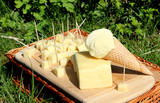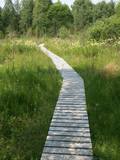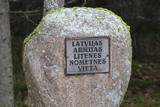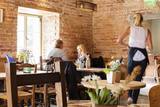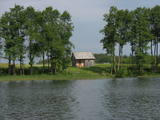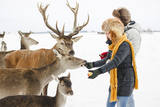| Nr | Nosaukums | Apraksts |
|---|---|---|
|
Atrodas Lielvārdes centrā pie Lāčplēša un Ausekļa ielas krustojuma, - tirdzniecības centrā „Elvi”. |
||
|
We strart the tour from Riga by bus and proceed along the Baltic Sea coast, passing through many different landscapes - white sandy beaches, coastal meadows, dunes with pine forests and steep banks. Many beaches are wild and completely deserted. Access to these territories were highly restricted during Soviet times. The route leads through ethnographic fishermen villages at Nida, passing Pape nature reserve where wild horses graze. The bustling city of Liepaja impreses with its lively promanade and music scene. The city also has a long military history which can cleary be seen walking among the naval fortifications and visiting the former millitary town. Well-maintained Ventspils has a pleasant market, castle and numerous parks. A restored narrow-gauge railway with working steam engine is well worth a visit as well as the Craft House - ideal for local handmade souvenirs. On the way back the tour goes through the pretty provincial town of Kuldiga with well- preserved wooden architecture. The tour includes two of the most interesting national parks: Slitere which holds the geological history of former ages and Kemeri with its great heath trail and sulphur springs. |
||
|
The Forest Trail leads through smaller paths, arching around Vangaži Lutheran Church and the Werewolf Pine. On its way to the Hunting Palace, it passes the garden created by opera singer Anna Ludiņa and then follows the Hunting trail. The first side ravines with the pronounced relief of the ancient valley of the River Gauja can be seen here. One of them is located by Inčukalns Velnala (Devil’s Cave), surrounded by small river channels of the old Gauja. From there, the Forest Trail continues through meadows and crosses the Murjāņi–Valmiera motorway, where the recreation park “Rāmkalni” is located. In this park, there is a café, shop and active leisure centre with a sledge track. On this route you will mainly see pine forests of various ages, as well as the botanical plantation with 80 tree and 120 shrub species. By the end of the section, the landscape features sandstone outcrops – Devonian sedimentary rocks and habitats protected in Latvia. |
||
|
Vasaras terases kafejnīca, kas atrodas Preiļu parka pludmales teritorijā, piedāvā 100% dabīgu mājas saldējumu ar ogām. Uz vietas cep svaigas "pampūkas". Darbojas tikai sezonas laikā no Mātes dienas (8. maija) līdz Tēva dienai (11. septembrim). Tūristu grupām piedāvā ekskursijas un siera saldējuma degustāciju. |
||
|
Pēc platības - salīdzinoši nelielais liegums veidots Zviedrijas kadiķa un tā dzīvesvietas – kaļķaino pļavu aizsardzībai. Lieguma apskatei izveidota marķētā lokveida taka, kas iepazīstina ar vienu no retajām, bet izcilākajām Latvijas kadiķu audzēm (50 – 70 gadi), apkārtnes biotopiem, augu un dzīvnieku sugām. Kadiķu tīraudzes Baltijā veidojušās cilvēka saimnieciskās darbības (pļaušana, ciršana u.c.) un noganīšanas (g.k. ar aitām) rezultātā. Arī tagad nelielu audzes daļu „apsaimnieko” aitas. Diemžēl, daudzi kadiķi teritorijas aizaugšanas gaitā ir aizgājuši bojā. |
||
|
Apskatāmi ~ 30 sugu un tikpat daudz dažādu šķirņu putni un dzīvnieki - dzērves, fazāni, gulbji, punduraitas, pundurcūkas, ķenguri, vāveres u.c. Ekskursija un stāstījums par dzīvniekiem un individuāla pastaiga pa dārzu. Iespējama retu un eksotisku augu stādu iegāde no kolekcijas dārza. |
||
|
„Lazdiņi” – viena no Latvijas modernākajām saimniecībām, atrodas Zemgales līdzenuma ziemeļrietumu daļā, Krimūnu pagastā. Saimniecībā orientējusies uz graudaugu (ap 1100 ha) audzēšanu, pirmapstrādi un uzglabāšanu. Tās saimnieks Juris Lazdiņš ir Latvijā lielākās lauksaimnieku nevalstiskās organizācijas vadītājs. Iepriekš piesakoties, uz saimniecību lauksaimniecības profesionāļi un topošie eksperti var doties pieredzes apmaiņā. Apkaimē paveras tipiska Zemgales līdzenuma ainava. |
||
|
Piemērots aktīviem gājējiem, kam patīk apvienot dabas vērošanu ar kultūrvides un vēstures izziņu. Šis ir ceļojums pa Baltijas iespaidīgākās upes – Gaujas senleju un tās pietekas – Amatas dziļo senleju. Abu upju krastos paceļas ainaviski devona perioda smilšakmens atsegumi. Līgatnes papīrfabrikas ciemats ir Eiropas mērogā izcils industriālā mantojuma piemērs ar savdabīgu – 19. – 20. gs. papīrfabrikas ciematvidi. Maršruta noslēgumā apskatāma Cēsu viduslaiku pils – varenākais viduslaiku Livonijas cietoksnis. Maršruta informācija no Latvijas Lauku foruma |
||
|
Litenes vārds saistās ar vienu no traģiskām Latvijas vēstures lapaspusēm. 20. gs. 20. - 30. gados netālu no tās atradās Latvijas armijas vasaras nometne, kur 1941. g. vasarā pret latviešu virsniekiem tika vērsts komunistiskā režīma terors: gandrīz pustūkstoti latviešu armijas virsnieku aizsūtīja uz Noriļsku Sibīrijā, daļu nošāva un slepus apraka tuvējā mežā. 1941. g. vasaras beigās hitleriskās Vācijas armija te nošāva ap 300 civiliedzīvotājus, g.k. ebrejus. Mūsdienās, godinot bojā gājušo piemiņu, izveidotas atceres un piemiņas vietas. |
||
|
Restorāns "Brūzis" atrodas Smiltenes parkā – Abula ielejā un izvietots Kalnamuižas bijušajā alus brūzī. Blakus atrodas Smiltenes sidra darītava, tādēļ viesi var nobaudīt ābolu sidru un mājas vīnu, kas darināts no Latvijas ogām. Latviešu virtuve: Aukstā zupa, cūkgaļa ar sīpoliem, kartupeļu pankūkas, rudzu maizes kārtojums, auzu pārslas ar putukrējumu. Īpašais ēdiens: „Brūzis” – pildīts cūkgaļas veltnītis. |
||
|
Maršruts ilgst 12 dienas, ar privāto auto transportu. Kopējā maršruta distance ir 1 500 km. |
||
|
Atrodas Dagdas dienvidrietumu daļā, 100 m no Daugavpils ielas. Viens no retajiem Latvijas pilskalniem, uz kura plakuma uzbūvēta skatu platforma. No tās paveras plašāka ainava uz Luboneņa ezeru un tuvāko apkaimi. |
||
|
Ungru Resto ir piejūras restorāns Hījumā ziemeļu krastā, kur atmosfēru rada kādreizējā muitas māja, Suursadamas vide, kvalitātīvs ēdiens un apkalpošana. Ēdienkartē tiek izmantotas vietējie produkti un tiek gatavoti tradicionālie Hījumā salas ēdieni, pasniegti mūsdienīgā stilā. Restorāns Ungru Resto - iesaka White Guide 2018. |
||
|
1,2 km gara taka, kas pa purvainu mežu aizved līdz Ērdi purvam (Öördi raba) un tā austrumu daļā esošajam Ērdi ezeram (Öördi järv), pie kura izveidota atpūtas un peldvieta. |
||
|
Tiek uzskatīts par Latvijas, iespējams, - Baltijas kuplāko ozolu. Vainaga izmēri ir 33 x 31 m.
|
||
|
Asotes pilskalna izveidē izmantota dabiska reljefa forma – Daugavas ielejas krasta daļa, kuru šķērso Dārzupīte. Pēc 20. gs. vidū veikto arheoloģisko izrakumu rezultātiem var spriest, ka pilskalnu apdzīvoja laikā no 1. g. t. pr. Kr. līdz 13. gs. 11. gs. tā aizsargsistēma tika uzlabota un papildināta ar gredzenveida aizsargvalni. Tas ir laiks, kad Asotes pilskalns bija kļuvis par svarīgu latgaļu cilšu amatniecības, tirdzniecības un novada centru. Pilskalna plakums virs tuvējās apkaimes paceļas par 10 m, tādēļ no tā paveras labs skats (dienvidu virzienā) uz Ābeļu salu, kuras ziemeļu galā redzams neliels reljefa paaugstinājums – Kaupres pilskalns. Otrpus (ziemeļos) no Asotes pilskalna atrodas t.s. Baznīcas kalniņš – sena kulta vieta. |
||
|
Gastrobārs Klaips ir vieta Ādažos, kur ieturēt maltīti gan ikdienā, gan svētkos. Piedāvājumā 9 valstu "street food" ēdieni, kā arī Latvijas modernās virtuves gaļas, zivju un veģetārie ēdieni. Plašs dzērienu piedāvājums. |
||
|
Līčiem, pussalām un salām bagāts ezers ar izrobotu krasta līniju, kas savienots ar Zvejnieku un tālāk - citiem Latgales augstienes ezeriem. Ozolu un platlapju meži, kas aug uz ezera salām un pussalās ir ne tikai aizsargājami, bet arī Latvijas mērogā nozīmīgi biotopi. Tiesa, to vērtību apzināsies tikai vides speciālisti. No Jašas ezera var uzsākt laivu braucienu pa vienu no Latgales ezeru "kēdēm". Ezera austrumu krastā atrodas Geļenovas parks.
|
||
|
„Barono vila” – paradīzes stūrītis, kurā ir plašs un dziļš zivju dīķis, brieži un dambrieži, kas ganās iežogotos aplokos, aitas, sēņu un ogu bagāti meži, dzidri ezeri un tūristu iecienītie Sventājas upes loki. Viesu nama restorānā tiek pasniegts svaigs, garšīgs un kvalitatīvs ēdiens, izsmalcināti brieža, dambrieža un aitas gaļas ēdieni, krāsnī cepta lietuviešu rudzu maize un uz ugunskura gatavots firmas ēdiens „Barona plovs”. |
||
|
Kopā ar Igaunijas pusē esošo Valgu – savdabīga pierobežas dvīņu pilsēta. |
||




